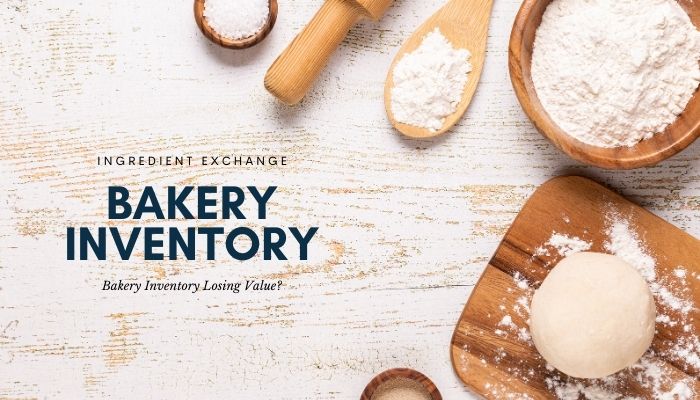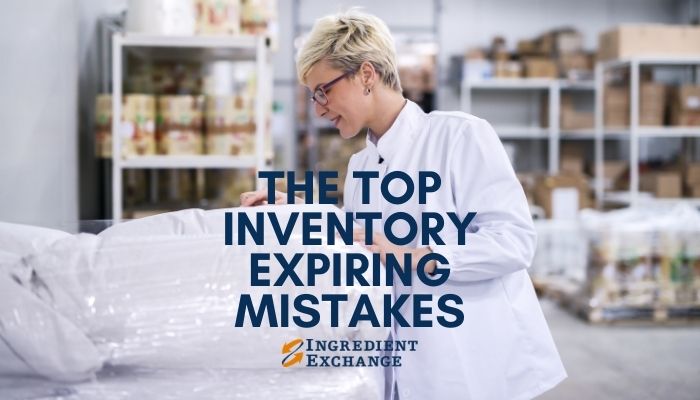The Top Inventory Expiring Mistakes: What Are They and How Can You Avoid Them
2 1/2 minute read
Expiring inventory can become an expensive issue.
In addition to being costly, expiring inventory can be detrimental to your supply chain as well as inventory management.
It’s not all a bleak circumstance, though, when food businesses run into expiring inventory issues.
Below are the top three mistakes that occur within inventory management and how to avoid them.
Not enough lead time to act upon expiring ingredients
Even with well-optimized inventory, ingredients expire or become unusable.
Inventory in this state needs an immediate plan of action before it is deemed entirely useless.
Businesses faced with expiring ingredients they can no longer use can partner with a third-party inventory vendor. This partner can be just the solution for alternative inventory uses. They can even partner before a company finds itself stuck with inventory.
The vendor will put the product into the market to help rescue as much inventory cost as possible. This type of vendor is an expert in finding new uses for inventory, helping you recover as much of your investment as possible.
Monitoring a product’s peak performance and value erosion helps the most: the sooner an expiring product can be processed, the better.
Overlooking a stocks peak performance
One mistake that warehouses make is focusing on the product’s expiration date versus evaluating stock at its peak performance mark.
When ingredients arrive at the warehouse, they typically have a good shelf life. The crew puts the new inventory into the system and on the shelf.
Whether the warehouse uses the FIFO or FEFO picking system, expiration dates typically guide stock optimization.
However, if businesses pay attention to a product’s peak performance mark (not just the expiration date), they can minimize getting stuck with non-usable foods.
For example, inventory with a two-year shelf life, such as granular sugar and nonfat dried milk, may reach peak performance around one year before expiration.
At that time, it’s critical to evaluate the inventory.
Has an ingredient’s demand slowed in the last year, making it vulnerable to expiring on the shelf? What’s the likelihood of the product moving in the following days, weeks, or months?
A peak-performance-date assessment will help ingredient owners determine the best course of action to take—while the ingredient is in prime condition.
Miscalculating Value-Erosion
A product’s value-erosion clock starts ticking the moment an ingredient lands in the warehouse.
For example, a warehouse that manages complex bakery inventory (in the 200-300 items range) faces the possibility of ingredients losing value.
The sooner they can identify problem inventory and begin the process of offloading the products, the better.

As an illustration, a bakery buys cinnamon, chocolate drops, and macadamia nuts.
Soon after delivery, its buyer cancels a baked-goods order.
Now, the bakery is stuck with the ingredients.
However, if they salvage the still-new ingredient immediately, they may recoup around 70-80 percent of the product’s original value.
Alternatively, as the product nears six months before expiration, the product’s value erosion increases rapidly.
By the time a product has 4 to 6 weeks of shelf life left, its value is minimal.
Once the ingredient hits or passes expiration, the product owners are looking at $0.10 on the dollar—sometimes much less.
Staying ahead of the expiring inventory clock
Many factors determine how much a business can get back on expiring ingredients.
Ingredients with over six months of shelf life will capture a better return than products close to expiration.
A twelve-week-plus shelflife is ideal, allowing the vendor to navigate the supply chain and recover a more significant portion of the original investment.
Ingredient Exchange is a trusted partner to help take expiring inventory off your hands (including pick up) and turn it into cash.
Got unusable ingredients, or questionable ingredients, you’d like salvage, let’s chat — while there’s still time?



